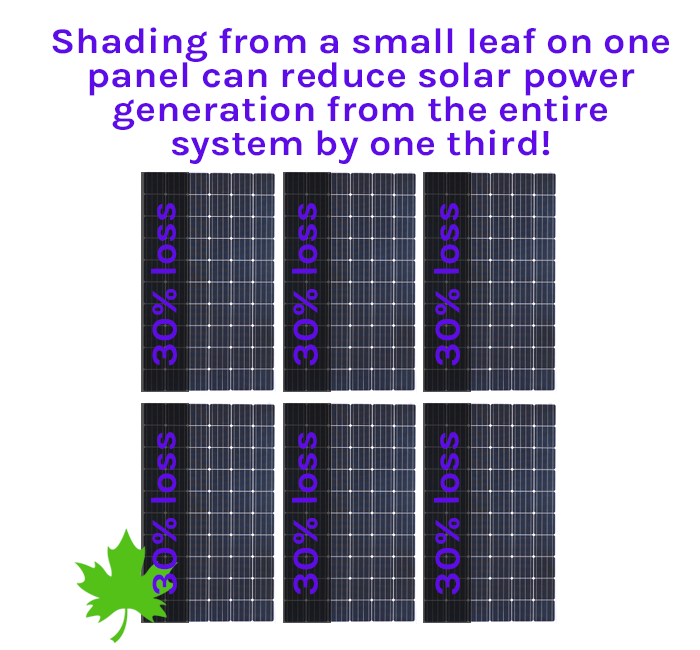Solar panel systems are complex pieces of technology, and while it may sound surprising that a mere shade can impede a solar power systems ability to generate power, shade (or shadows) are actually one of the most common reasons for under-performing panels.
Panels subjected to a small amount of shade will produce much less power than those that are free from shade.
For example, shade on 10% of a solar panels surface area could lead to decreased power generation; reductions by a third are possible.

Fortunately, in most circumstances, shading on panels can be easily amended. With a little know how and can do, we’ll get those panels back to peak performance in next to no time.
But first, where can panel shading come from? The most likely culprits are trees, buildings, clouds, other panels, and even the configuration of a roof (odd angles can cause shadowing on panels).
Trees and foliage are probably the most common shading issue, but also one of the easier problems to solve, this is especially true if the trees in question are on the property where the solar panels are.
If it is the council, or a tree on the neighbor’s property is causing the shade, then best to discuss trimming with them. Generally speaking, councils around New Zealand are good at tree felling during the year, or when they are needed in situations such as these.

Roofs can be slightly tricky if the cause of shade is something like a chimney, which might only cause slight disruptions as the sun moves throughout the day. But if the chimney is intruding for longer periods of time then it might be worth moving the panel or panels. Having said that, it’s rare that chimneys are a problem – professional solar power installers should be well versed in keeping all shading hazards at bay prior to installation.
And while we’re on the topic of professional solar power installers, customers can, and perhaps should, ask for a detailed shade report (or a shade map). A shade report helps determine the impact of shade on solar panels, and whether a roof is suitable for solar power (as is) or if other options need to be explored to get the system installed.
What options are presently available? Power optimisers and microinverters can prevent efficiency loss from shading. Microinverters and power optimisers enable each solar panel in a system to operate independently, so the system’s energy generation is not disproportionally affected when partially shaded. A detailed shade report can really pay dividends to the savvy solar consumer.
Shading is solar panels public enemy number one, but luckily consumers can tackle the issue head on with professional installers that love a good shading challenge. Who are the trusted solar power installers? Get in touch with My Solar Quotes for 3, free, no obligation quotes from trusted professional solar panel installers in your immediate location. We’re open 24/7 and are here to help make your solar dream a reality.


Post your own comment